Nastavení procesu
Automatické seřízení nástrojů a ustavení obrobku s využitím sond může být až 10x rychlejší než manuální metody.
Opatření v druhé vrstvě Productive Process Pyramid™ definují vztahy mezi strojem, nástrojem a obrobkem před zahájením obrábění. Tato automatizovaná, prediktivní opatření zajišťují správné obrobení hned první třísky.
Zajistěte správné a přesné obrábění hned od první třísky
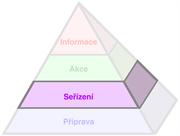 Vrstva „Nastavení procesu“ popisuje opatření nezbytná k eliminaci zdrojů nepřesností jakými jsou například poloha obrobku, opotřebení nástroje nebo natočení souřadného systému. Korektně provedená opatření přizpůsobují běh NC programu skutečnému umístění dílce.
Vrstva „Nastavení procesu“ popisuje opatření nezbytná k eliminaci zdrojů nepřesností jakými jsou například poloha obrobku, opotřebení nástroje nebo natočení souřadného systému. Korektně provedená opatření přizpůsobují běh NC programu skutečnému umístění dílce.
Jedná se o prediktivní opatření prováděná před začátkem obrábění.
Správné nastavení nástroje zahrnuje…
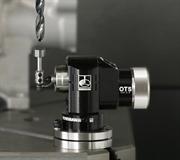 nastavení délky nástroje vzhledem k referenční ploše nebo referenčnímu nástroji, zavedení odpovídající délkové nástrojové korekce a kontrolu, že takto nastavená délka je v mezích požadované tolerance.
nastavení délky nástroje vzhledem k referenční ploše nebo referenčnímu nástroji, zavedení odpovídající délkové nástrojové korekce a kontrolu, že takto nastavená délka je v mezích požadované tolerance.- Zjištění průměru rotujícího nástroje a zavedení radiální korekce velikosti nástroje.
Správné ustavení součásti zahrnuje…
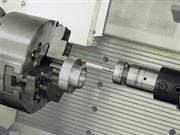 identifikaci dílce a výběr správného NC programu.
identifikaci dílce a výběr správného NC programu.- Stanovení polohy výchozího prvku na dílci a přenesení pracovního souřadného systému (WCS) do tohoto bodu.
- Stanovení velikosti přídavku na obrábění polotovaru a určení hloubky první třísky.
- Zjištění polohy obrobku vůči osám stroje a natočení WCS podle obrobku.
Správné nastavení stroje zahrnuje…
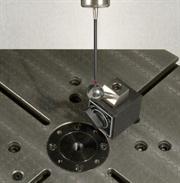 vyrovnání upínacích přípravků, rotačních os a indexovacích zařízení, které budou použity k ustavení a upnutí obrobku.
vyrovnání upínacích přípravků, rotačních os a indexovacích zařízení, které budou použity k ustavení a upnutí obrobku.- Určení polohy středu otáčení indexovacího zařízení a stanovení polohy referenčních bodů na upínacích prvcích.
Prediktivní řízení
Díky automatickému nastavení pomocí sond ušetříte čas, který můžete věnovat obrábění. Ustavování pomocí sond je až desetkrát rychlejší než manuální metody.
Můžete pak lépe plánovat výrobu, protože budete vědět, jak dlouho bude nastavení trvat.
Procesy ustavení obrobku a seřízení nástrojů mohou být plně ovládány programem. Pro měření, výpočet odchylek a zavedení korekcí do nástrojových tabulek není zapotřebí činnost operátora stroje.
Obrobkové a nástrojové sondy Renishaw a software Productivity+™ jsou důležitými nástroji pro rychlé, automatické a opakovatelné nastavení obráběcích operací.
Productive Process Patterns
-
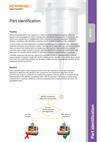 Educational article: (AP200) Productive Process Pattern: Part identification [en]
Educational article: (AP200) Productive Process Pattern: Part identification [en]
Productive Process Pattern™ from the process setting layer of the Productive Process Pyramid™. Use a workpiece inspection probe to take measurements on the raw material (or previously machined features) to determine the identity of the component, the component alignment on the machine tool, and/or to check for non-conforming material.
-
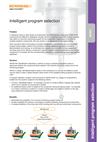 Educational article: (AP201) Productive Process Pattern: Intelligent program selection [en]
Educational article: (AP201) Productive Process Pattern: Intelligent program selection [en]
Productive Process Pattern™ from the process setting layer of the Productive Process Pyramid™. Use a workpiece inspection probe to determine whether the component blank loaded in the machine tool is the correct one for the machining program. Where a unique, identifiable feature exists on the component (or one can be added) a probe may be used to make a logical decision about which of the available cutting programs should be used.
-
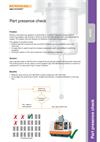 Educational article: (AP202) Productive Process Pattern: Part presence check [en]
Educational article: (AP202) Productive Process Pattern: Part presence check [en]
Productive Process Pattern™ from the process setting layer of the Productive Process Pyramid™. Use a workpiece inspection probe to identify which components are actually present and should be machined. The probing results can be used to control program logic that determines whether to machine a component or to skip machining if no part is present.
-
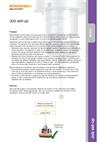 Educational article: (AP203) Productive Process Pattern: Job set-up [en]
Educational article: (AP203) Productive Process Pattern: Job set-up [en]
Productive Process Pattern™ from the process setting layer of the Productive Process Pyramid™. Use a workpiece inspection probe to automatically measure the location of the component and update the relevant offset. Where appropriate, also use the probe to update the orientation of the component using a controller function or a rotary axis.
-
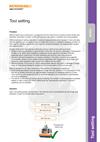 Educational article: (AP204) Productive Process Pattern: Tool setting [en]
Educational article: (AP204) Productive Process Pattern: Tool setting [en]
Productive Process Pattern™ from the process setting layer of the Productive Process Pyramid™. Use a tool setting probe mounted within the machine tool to automatically set the length and diameter of each tool before machining begins.
-
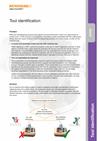 Educational article: (AP205) Productive Process Pattern: Tool identification [en]
Educational article: (AP205) Productive Process Pattern: Tool identification [en]
Productive Process Pattern™ from the process setting layer of the Productive Process Pyramid™. An on-machine tool setting system is used to establish tool length and diameter offsets when replacing tools. As a safety check, the measured values are compared against reference dimensions with a tolerance applied: if the tool length or diameter deviation is greater than the allowed tolerance, the process will stop safely before any machining takes place or any damage can occur.
-
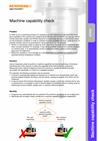 Educational article: (AP206) Productive Process Pattern: Machine capability check [en]
Educational article: (AP206) Productive Process Pattern: Machine capability check [en]
Productive Process Pattern™ from the process setting layer of the Productive Process Pyramid™. Use a workpiece inspection probe to perform a machine capability test before machining. Commence machining only if the machine is within the capability limits defined for the component. Measuring known reference features shows the machine is capable of positioning itself accurately and repeatably, or if there is a capability problem.
-
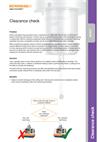 Educational article: (AP207) Productive Process Pattern: Clearance check [en]
Educational article: (AP207) Productive Process Pattern: Clearance check [en]
Productive Process Pattern™ from the process setting layer of the Productive Process Pyramid™. Use a workpiece inspection probe to test critical sections of a toolpath where interference is possible. The probe will stop when a collision is detected making it safe to perform this check: a cutting tool is not able to provide this feedback. Proceed with the machining process only after all potentially hazardous areas have been tested and probe results indicate that no obstacles exist within the tool path.
-
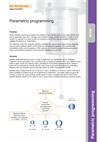 Educational article: (AP208) Productive Process Pattern: Parametric programming [en]
Educational article: (AP208) Productive Process Pattern: Parametric programming [en]
Productive Process Pattern™ from the process setting layer of the Productive Process Pyramid™. Use a workpiece inspection probe to measure features which vary between parts within a given family and allocate macro variables for those feature measurements. Different parts can be produced by a family-specific rather than a part-specific program by controlling features that vary between parts using logic based on probe measurement results.
-
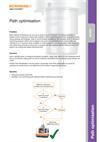 Educational article: (AP209) Productive Process Pattern: Path optimisation [en]
Educational article: (AP209) Productive Process Pattern: Path optimisation [en]
Productive Process Pattern™ from the process setting layer of the Productive Process Pyramid™. Use a workpiece inspection probe to measure workpiece condition. Apply logic based on the measured stock size to control the cutting path so that air cutting is eliminated and machining moves always cut metal.
-
 Educational article: (AP210) Productive Process Pattern: Adaptive machining [en]
Educational article: (AP210) Productive Process Pattern: Adaptive machining [en]
A manufacturing process may dictate that the form of a finished component is dependent on the form of the input material for that process. In these circumstances, it is necessary to measure the form of the input component and use the measurement to produce a customised cutting program which is unique to that component.
Dokumenty
-
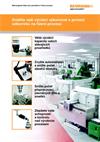 Brožura: Metrologická řešení pro produktivní řízení procesů
Brožura: Metrologická řešení pro produktivní řízení procesů
Změňte vaši výrobní výkonnost s pomocí odborníků na řízení procesů
-
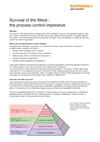 White paper: Survival of the fittest - the process control imperative [en]
White paper: Survival of the fittest - the process control imperative [en]
In tough times, manufacturers focus on reducing their operating costs, but may not be able to afford to spend their way out by buying more productive machinery. With that pathway closed, what are the opportunities for radically reducing costs without replacing existing machines? This paper explores four areas where substantial savings can be found if firms are prepared to change the way they control their machining processes.
-
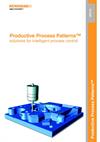 Educational article: (AP010) Productive Process Pattern: Productive Process Patterns™ [en]
Educational article: (AP010) Productive Process Pattern: Productive Process Patterns™ [en]
Introduction to the Productive Process Patterns™ - solutions for intelligent process control within manufacturing













